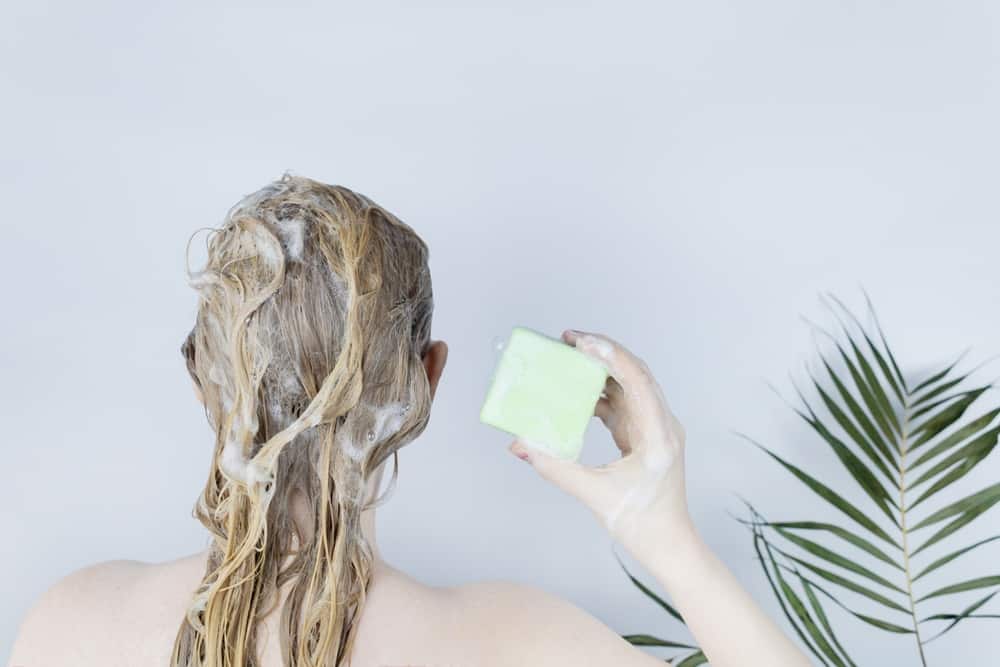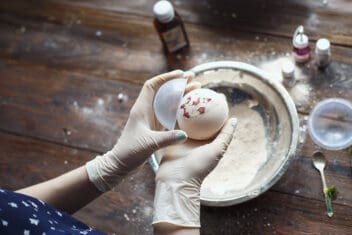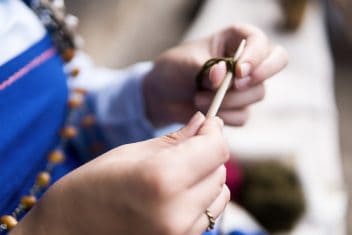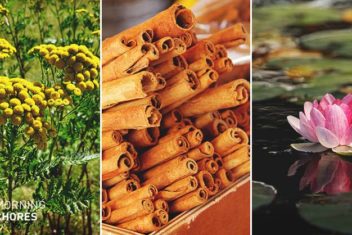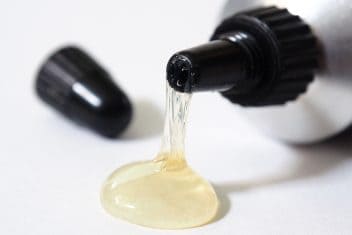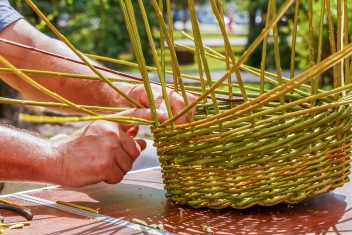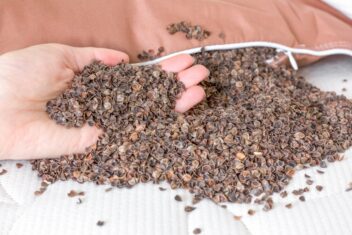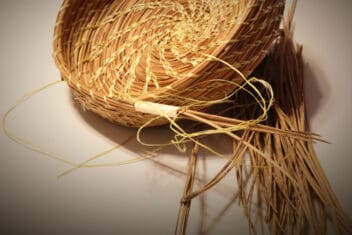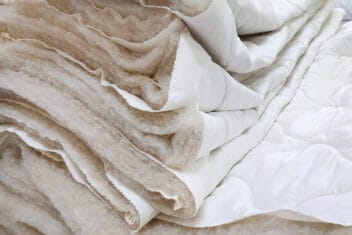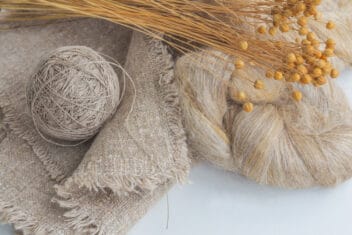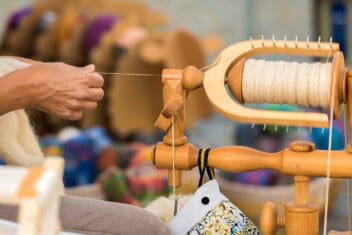Those of us who revel in self-sufficiency tend to make self-care a high priority. For example, many of us eat organic food and make our own natural cleaning products. But what about self-care?
Many personal care products are packed with carcinogenic chemicals and petrochemical ingredients. Furthermore, almost all of us have microplastics floating around in our bodies. Fortunately, we can go a healthier route and make our own soaps, moisturizers, and shampoos.
Below are a few different shampoo recipes for you to try. You’ll need to experiment a little bit to determine what works best for your hair, of course.
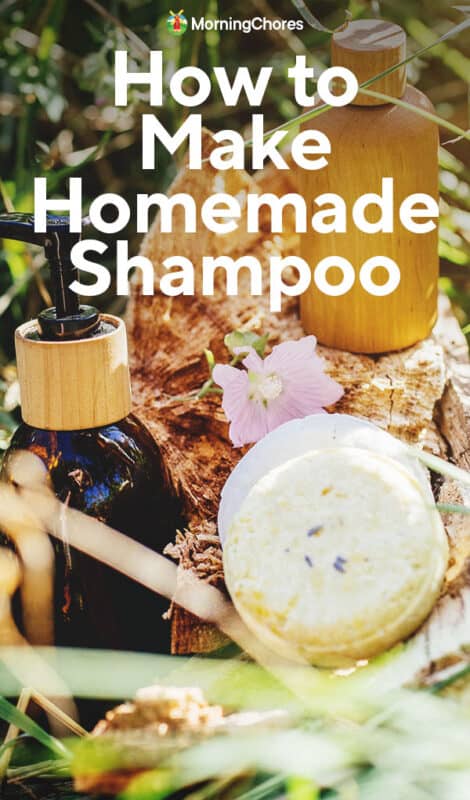
Basic Shampoo Recipe
This is one of the easiest shampoo recipes to try out. It only uses a few simple ingredients, and you can adapt proportions as you see fit
Ingredients:
- Liquid Castile soap (I use Dr. Bronner’s), either scented or unscented
- Water
- Essential oil (optional)
- Avocado, jojoba, or light olive oil (optional)
Mix equal parts Castile soap and water, and mix gently so it doesn’t froth up. If you have dry or curly hair, add one teaspoon of oil to every two cups of shampoo.

If you chose unscented Castile soap, you can add whatever essential oils (EO) you like. I use sandalwood and jasmine EO for my blend, while my partner prefers cedar. You can use scented Castile soap if you find one that you really like.
Once everything is mixed together, use a funnel to decant it into a bottle. Then use it as you would any other shampoo. Rinse with either cool or warm water, then condition as usual.
Dry Shampoo
If your hair is greasy but you don’t have enough time to shower, a dry shampoo rub can do the trick. The key here is to use a base powder that won’t contrast too strongly with your hair color.
Ingredients:
- 1/4 cup cornstarch (for light hair) or cacao powder (for dark)
- 1/4 cup kaolin clay
- 15 drops EO of your choice (optional)
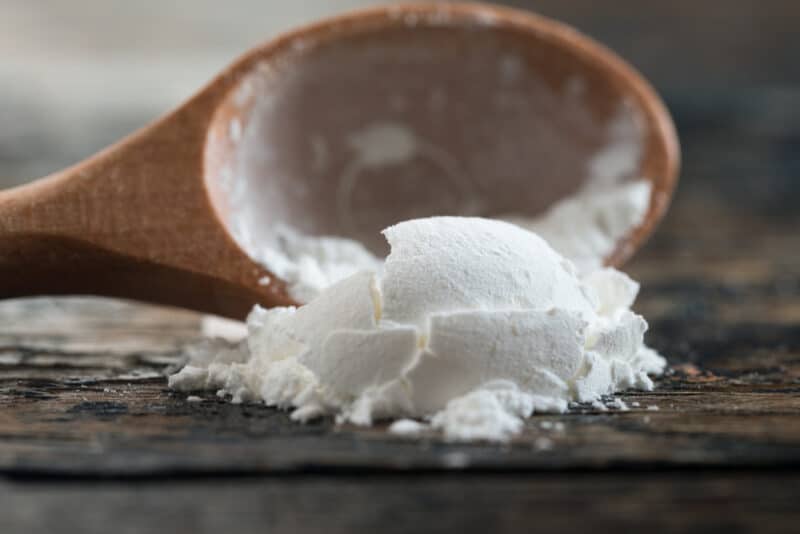
Mix the dry ingredients together in a small bowl. If you’re adding EO, shake the drops in and then mix together with a fork or small whisk to distribute evenly. When you’re ready to use it, apply a bit of the powder to your scalp with a med-large cosmetic brush.
Distribute it evenly and shake out the excess. This powder will absorb excess oil and keep your hair bouncing until you can wash it properly.
Shampoo Bars
You can make these in any shape you like, though most people use basic round or square molds for theirs. Furthermore, you can add different ingredients to suit your individual hair texture and scent preferences.
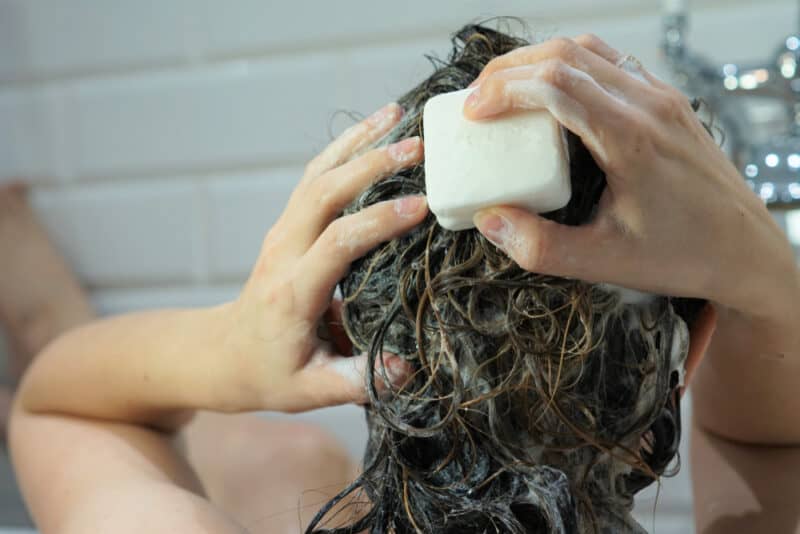
Making shampoo bars is trickier than making liquid shampoo. In fact, I wouldn’t recommend going this route until you’ve had some experience making standard soap bars. If you’re feeling experimental and want to try, however, make sure to protect yourself. Since you’ll be working with lye, you’ll have to wear gloves and protective eyewear.
Furthermore, keep a cup of plain white vinegar within reach. Lye is severely alkaline, so if you get any on your bare skin, you can counteract its caustic effects by splashing an acid (vinegar) over it.
Finally, remember to ALWAYS add lye into liquid rather than the other way around. If you add liquid to lye, you’ll have the same effect as grade school volcano projects. The last thing you want is a lye explosion in your home.
What You’ll Need
- Scales (everything is measured by weight, not volume)
- 30 oz of mixed oils, such as olive, sunflower, canola, castor, coconut, sweet almond, argan, jojoba, etc. The key one here is castor oil, which causes everything to froth up nicely.
- Glass, plastic, or ceramic bowls: lye doesn’t react well with any metals
- 4.2 oz of lye (sodium hydroxide): be sure to acquaint yourself with a good lye calculator to get the ratios right. Otherwise, your shampoo bar won’t saponify
- 9.9 oz of water or other liquid (such as goat milk, coconut milk, or herbal tea)
- 3/4 tsp salt: this makes shampoo and soap bars harden more quickly
- 3/4 tsp sugar: optional, to increase lather
- 30 drops essential oil(s) of choice: optional
- Whisk and immersion blender
- Ladle
- Spatula
- Waxed paper
As far as proportions go, your oil percentages will depend on your hair type. Olive oil is great for those who want more moisture, while coconut and jojoba are better for finer hair that’s prone to being oily. Experiment with percentages, but ensure that the oil weight amounts to 30 oz in total.
Similarly, the liquid you use to dissolve the lye will have different effects on your hair. Strong-brewed chamomile tea, for example, adds highlights to blonde hair. Saffron tea can add a massive boost to red hair, while coffee or black tea enhances dark hair.
Step 1: Prep the Molds
Line the soap molds you’re using with waxed paper. This makes it much easier to remove the shampoo bars later. Alternatively, you can use flexible silicone molds that’ll let you pop the bars out easily.
Step 2: Get Oily
Combine all your oils, including the optional essential fragrance oils. If you’re adding coconut oil to this recipe, you’ll have to melt it first.
I like to melt mine gently in a double boiler, but you can also microwave it gently on low heat. Combine all of your oils together in a large bowl and stir gently to combine well.
Step 3: Lye Time
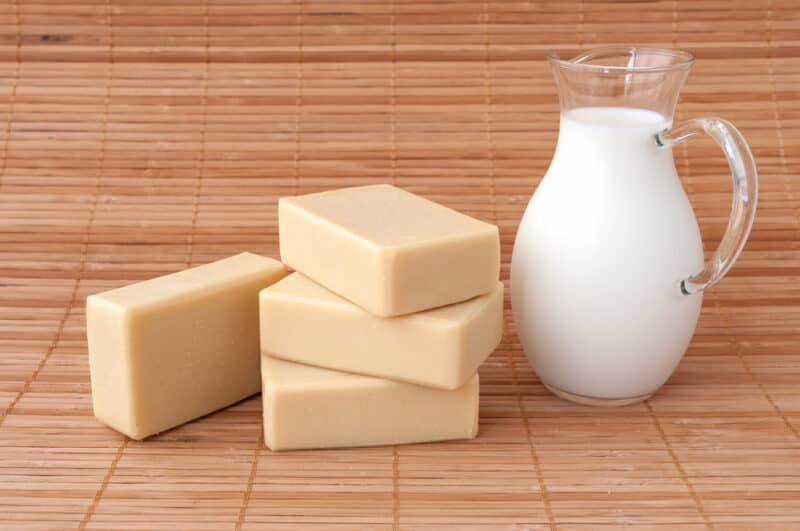
Pour the liquid into a separate bowl, and sprinkle the lye into it a bit at a time. If you’re using milk, freeze it partially, so the lye doesn’t ignite the sugars in it, then let it thaw to room temperature.
Step 4: Stir it Up
Pour the lye liquid into the oils a bit at a time, stirring with the whisk gently as you go. Once combined, add in the sugar and salt as well.
At this point, you can use your immersion blender in small bursts, but I prefer to keep going with a hand whisk. Keep stirring thoroughly until the mixture starts to “trace”. This means that when you pull the whisk out, the droplets that fall of it will remain on the mixture’s surface, rather than sinking.
This mixture will keep thickening up as you stir. I like my mixture to be quite thick, so medium-heavy when I pour it into the molds.
Step 5: Get Moldy
Grab your ladle and pour the mixture into your soap molds. Use the spatula to get the last wonderful bits out of your bowl. Once all the shampoo is in the molds, thunk them gently on the surface of wherever you’re working. This will dislodge any bubbles that may be in there.
Step 6: Curing
Let the mixture settle for 48 hours before popping the bars out of their molds. Then wrap them individually in waxed paper and allow them to cure for at least three months. This will give them enough time to harden up for ideal use. The longer you allow them to cure, the firmer they’ll get.
Notes on Hair Types

As mentioned earlier, different hair types will require different ingredients. For example, my type 2B waves don’t typically need as much moisturizer as type 4B coils. That said, I do have dry hair, so I add light olive and avocado oils to my shampoo and conditioner. In contrast, 4B coils often benefit from argan or sweet almond oil.
Similarly, scents you enjoy in passing might become annoying or overwhelming if you smell them on your own hair all day. The best thing to do is try different ingredients in various proportions.
Write down every recipe you try until you find the one that’s perfect for you. Once you have your eureka moment, you’ll have a tried-and-true shampoo formula that you’ll be able to use for years.
Don’t be afraid to experiment with different ingredients. It may take several tries before you find a formula that works best for you. Remember that none of your attempts will be a “failed” experiment.
If you’re making bars and the mixture doesn’t harden to your satisfaction, you can turn it into liquid shampoo! Just chop up the bars, mix them with water, and decant them into bottles. Then use it as you would any standard liquid shampoo.
Happy experimenting!
